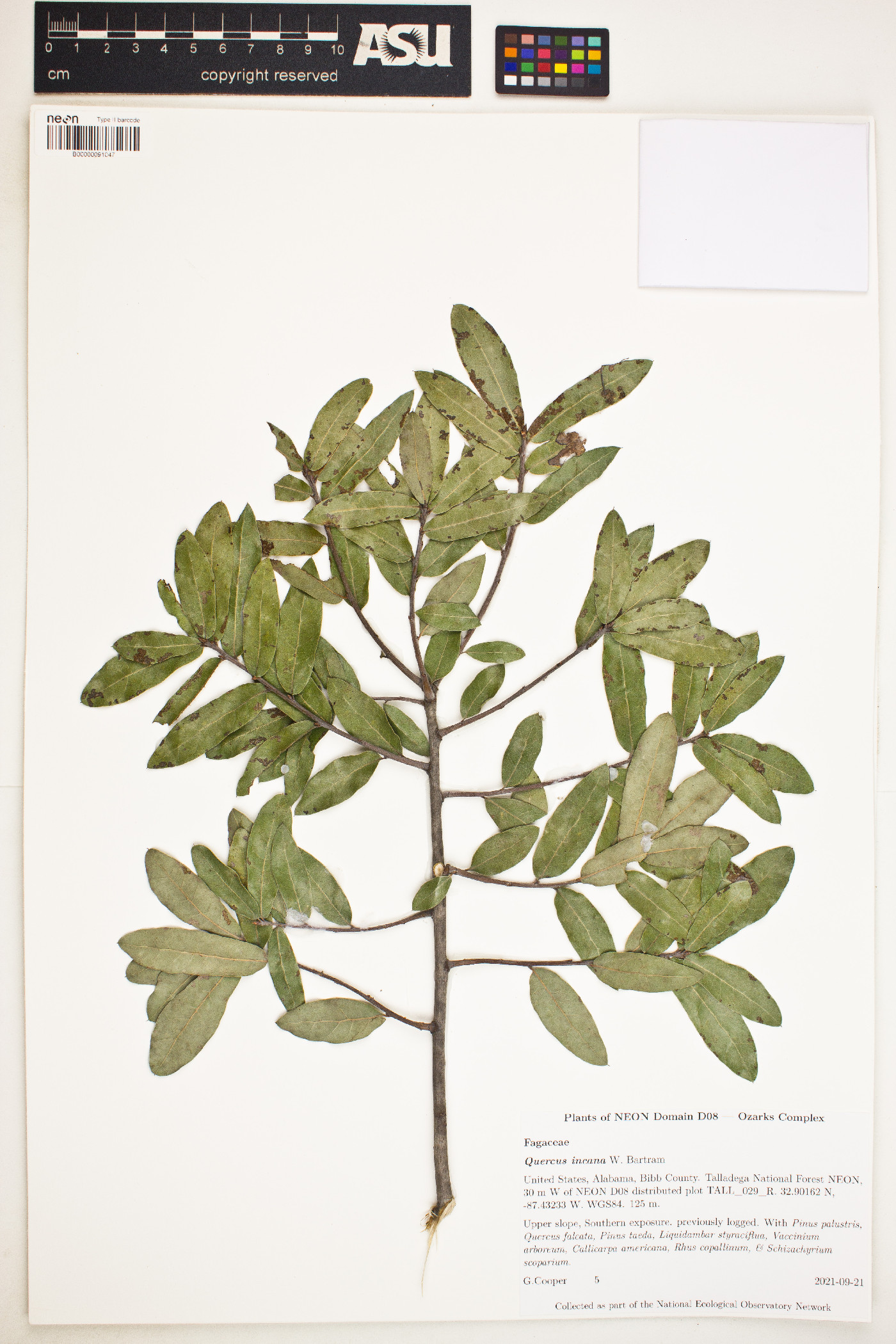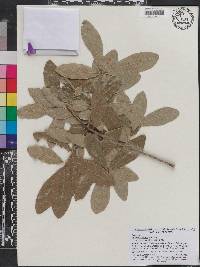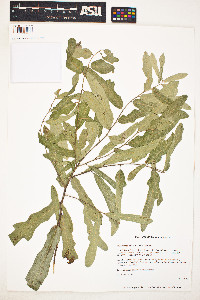|
|
|
|
Family: Fagaceae
bluejack oak
[Quercus cinerea Michx.] |
Trees , deciduous, to 10 m. Bark dark brown to black with square plates. Twigs brown to reddish brown, 1-2.5 mm diam., tomentose to sparsely pubescent. Terminal buds light brown to reddish brown, narrowly ovoid to conic, 3.5-7 mm, distinctly 5-angled in cross section, scales pubescent, often tuft of reddish or silvery hairs at apex. Leaves: petiole 2-8(-10) mm, tomentose. Leaf blade narrowly ovate or elliptic to obovate, usually widest near middle, planar, 30-100 × 12-35 mm, base acute (rarely attenuate) to rounded, margins entire, with 1 apical awn (leaves on juvenile or 2d-flush growth may have 2-3 shallow lobes and 3-5 awns), apex acute or obtuse, rarely rounded; surfaces abaxially densely tomentose, hairs in vein axils often reddish, easily distinguished from others, adaxially often glossy, sparsely pubescent, especially along midrib and near base, veins often raised. Acorns biennial; cup saucer-shaped to bowl-shaped, 4.5-8 mm high × 10-18 mm wide, covering 1/4-1/3(-1/2) nut, outer surface pubescent or puberulent, inner surface uniformly pubescent, scale tips tightly appressed, obtuse or acute; nut ovoid (rarely subglobose) to broadly ellipsoid, 10-17 × 10-16 mm, occasionally striate, glabrate, scar diam. 5.5-10.5 mm. Flowering spring. Well-drained sandy soils of barrens, hammocks, dunes, and upland ridges; 0-250 m; Ala., Ark., Fla., Ga., La., Miss., N.C., Okla., S.C., Tex., Va. Quercus incana reportedly hybridizes with Q . falcata [= Q . × subintegra (Engelmann) Trelease], Q . hemisphaerica (D. M. Hunt 1989), Q . laurifolia (= Q . × atlantica Ashe), Q . laevis (= Q . × asheana Little), Q . marilandica (= Q . × cravenensis Little), Q . nigra (= Q . × caduca Trelease), and Q . phellos (E. J. Palmer 1948); with Q . pumila (D. M. Hunt 1989); and with Q . velutina (= Q . × podophylla Trelease), and questionably, Q . myrtifolia .
Small tree, to 15 m; twigs of the season cinereous- tomentulose; lvs with a dull blue-green cast, especially beneath, firm, elliptic to oblong or narrowly obovate-oblong, 5-10 נ1-3 cm, obtuse or rounded and bristle-tipped, entire, broadly cuneate to rounded at base, permanently cinereous-tomentulose beneath with minute, stellate hairs; veinlets of the upper lf- surface minutely depressed; acorn 1-1.5 cm, the cup saucer-shaped, covering a third of the nut, its scales ovate-oblong, obtuse. Dunes and dry pine barrens; se. Va. to Fla. and Tex., mostly on the coastal plain, and n. to Okla. (? Q. incana W. Bartram, perhaps misapplied) Gleason, Henry A. & Cronquist, Arthur J. 1991. Manual of vascular plants of northeastern United States and adjacent Canada. lxxv + 910 pp. ©The New York Botanical Garden. All rights reserved. Used by permission. |




